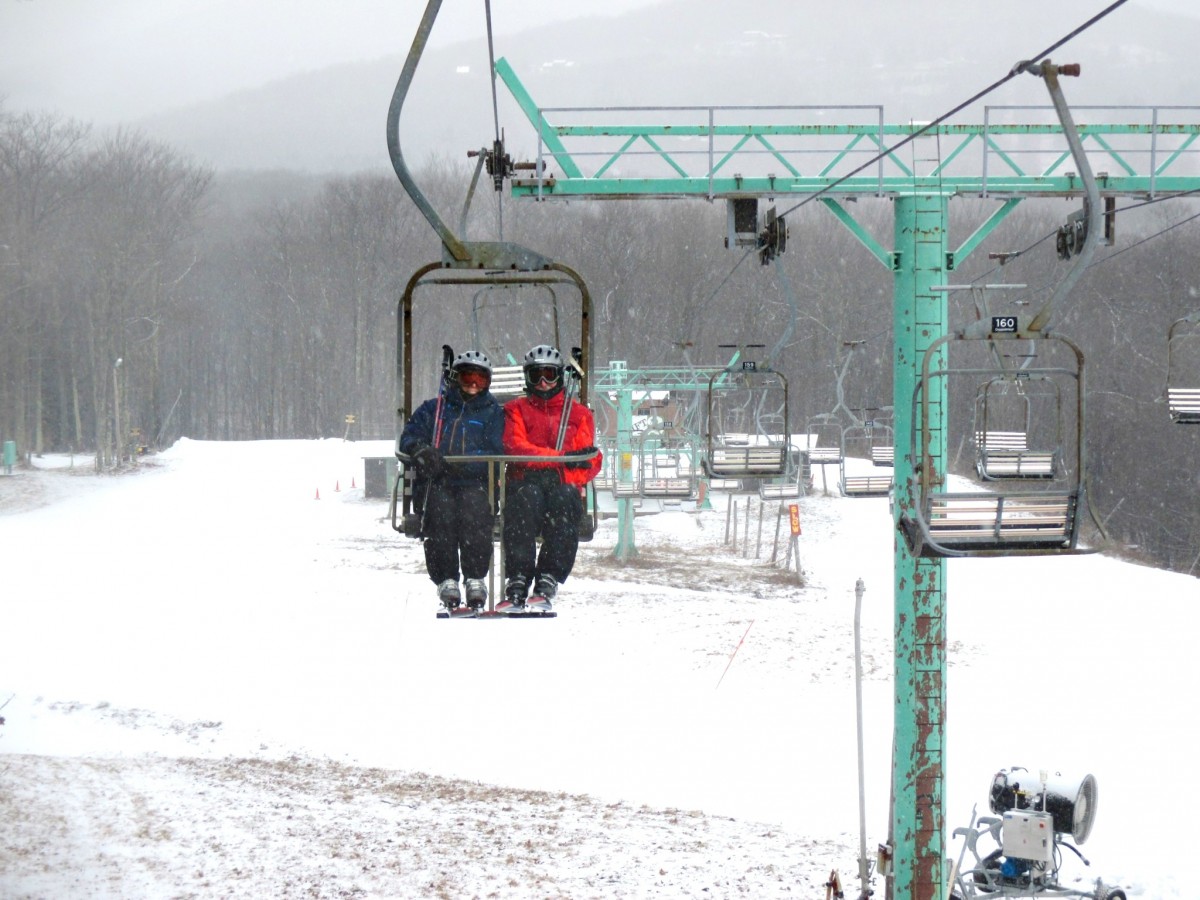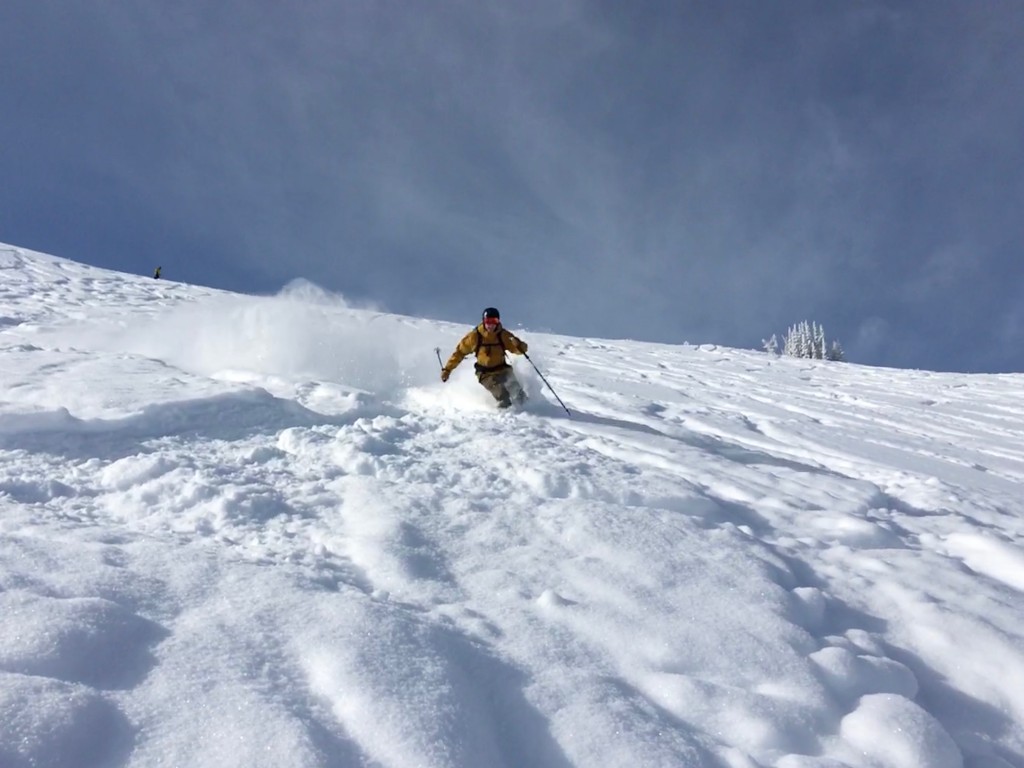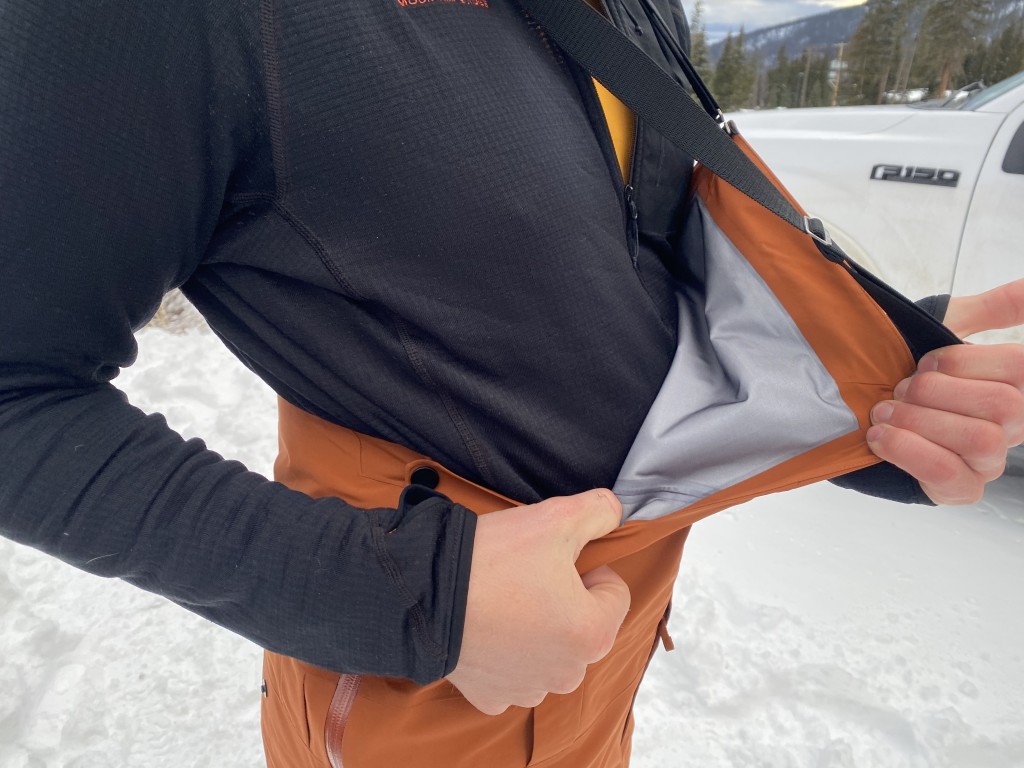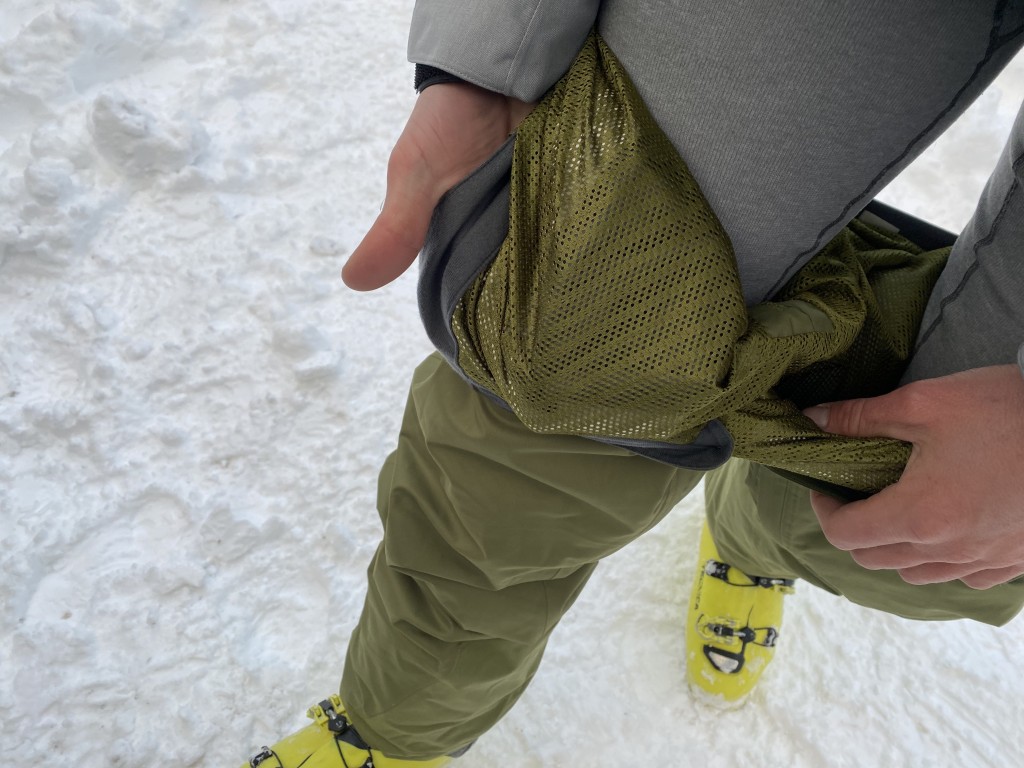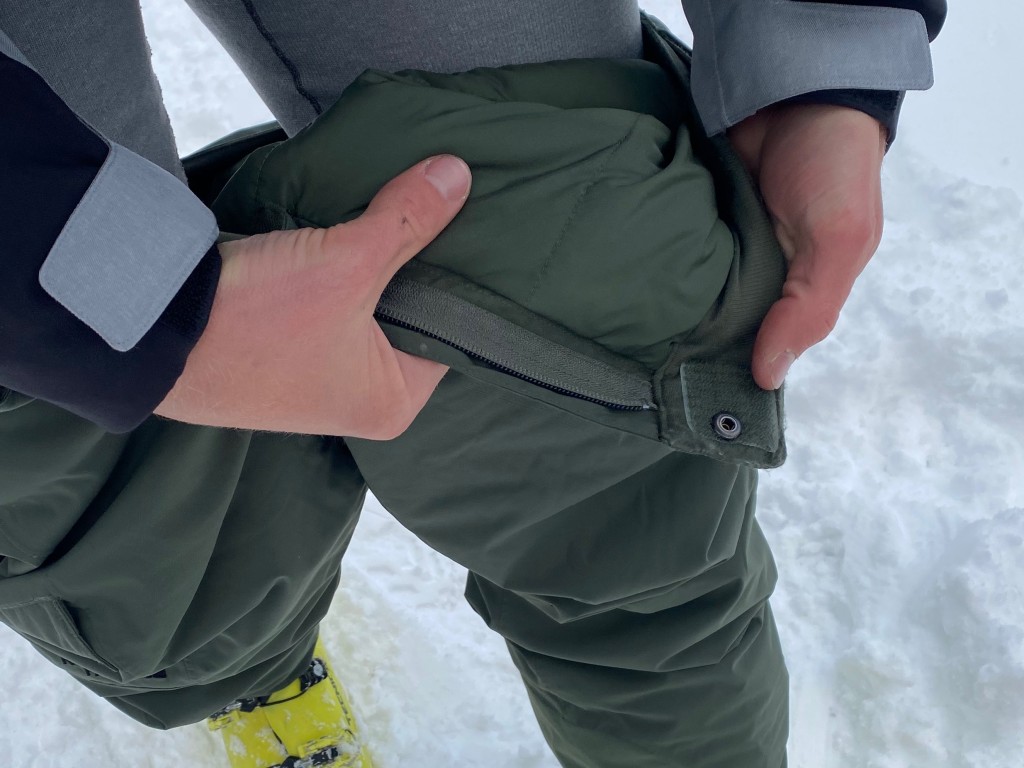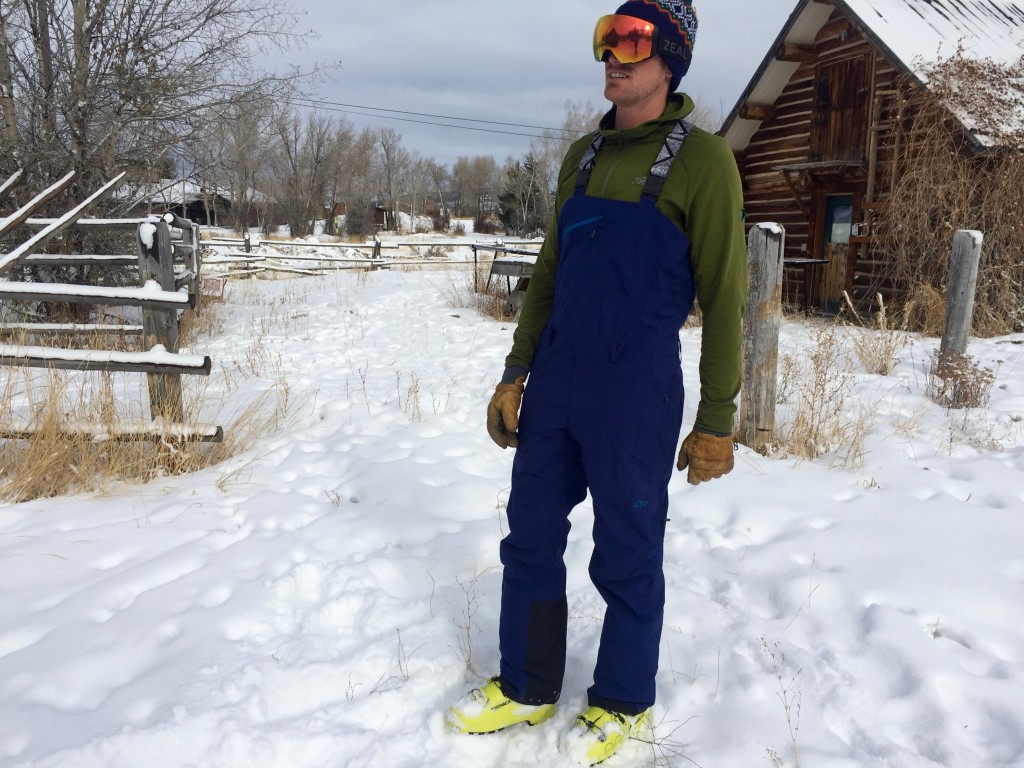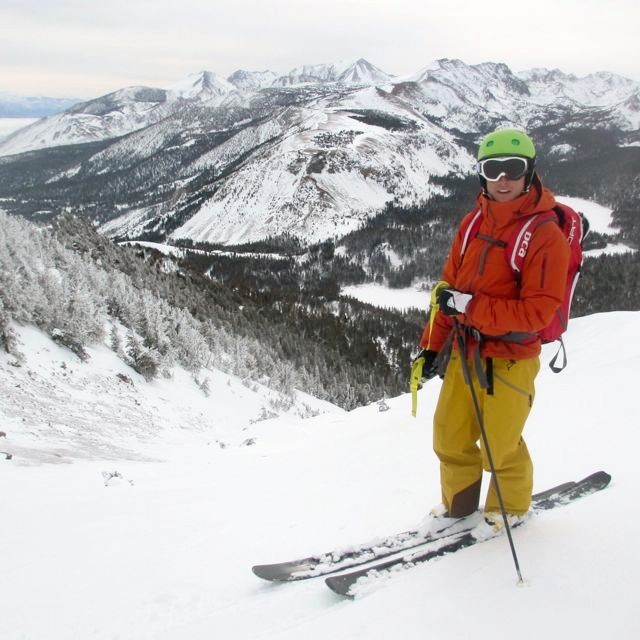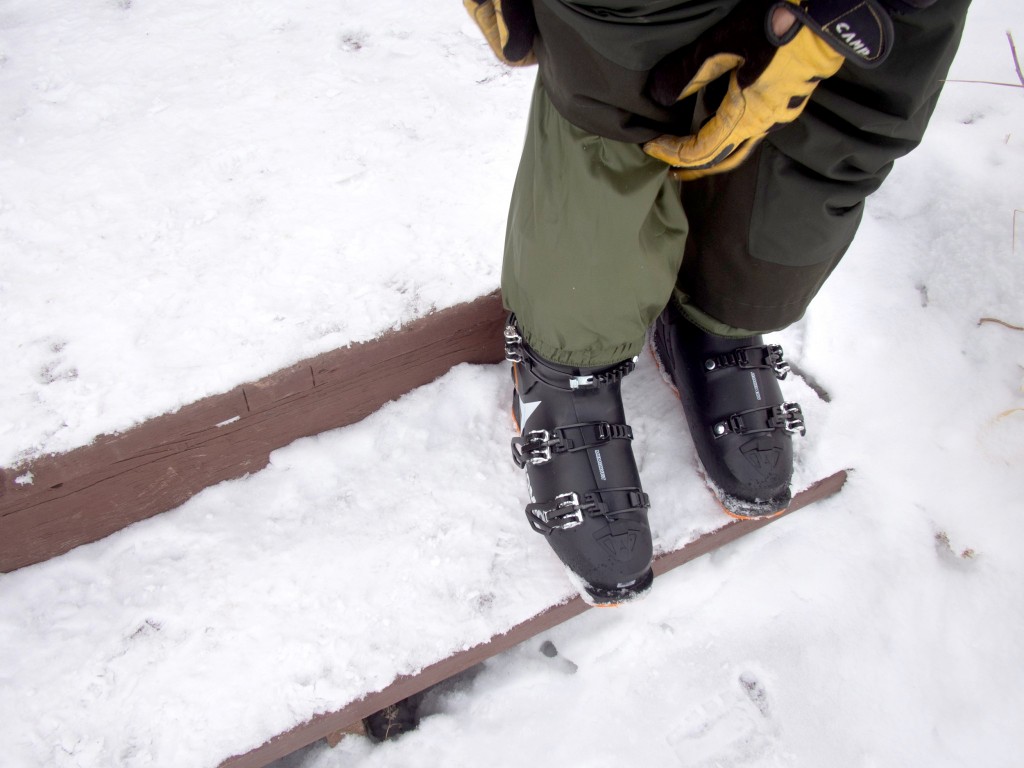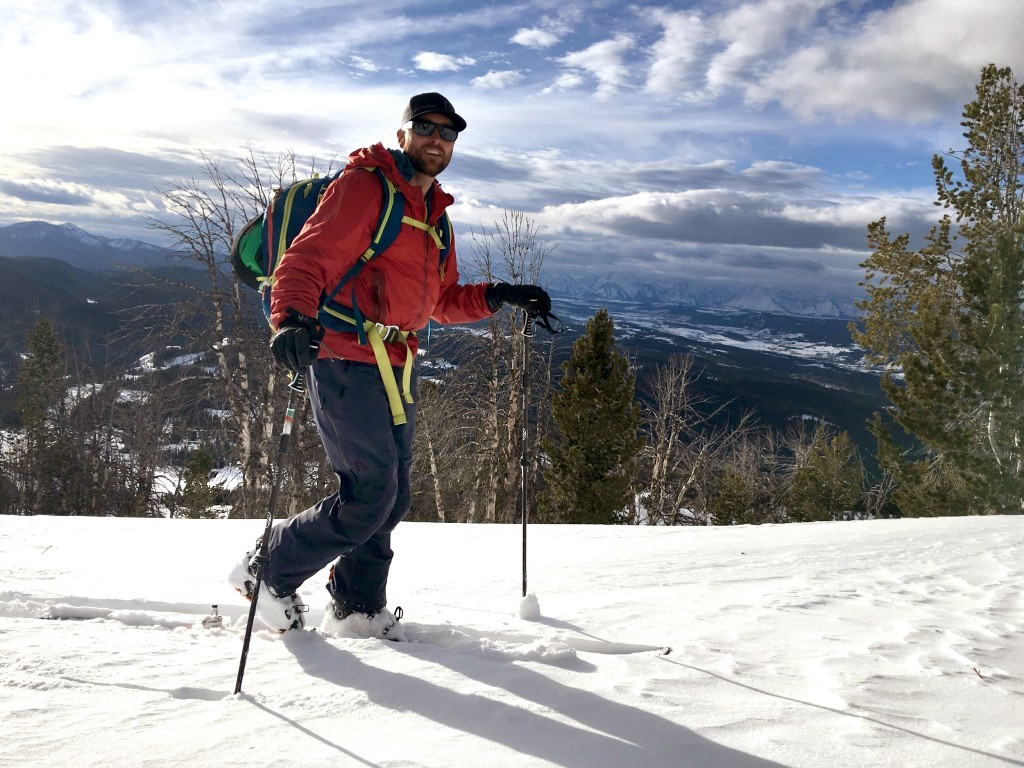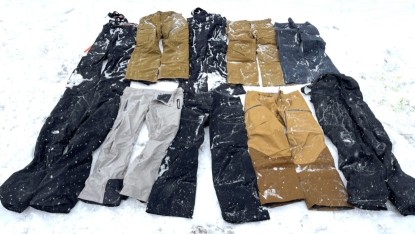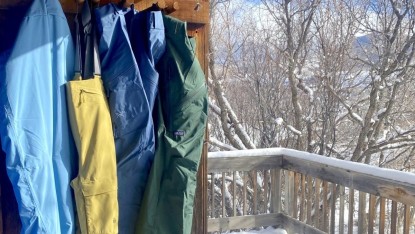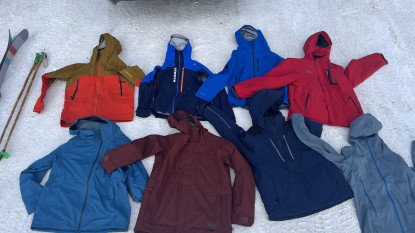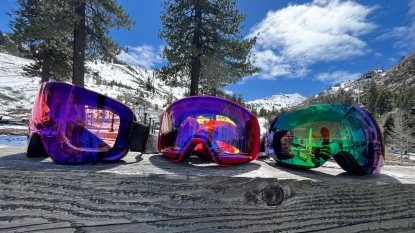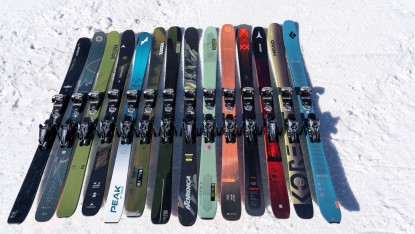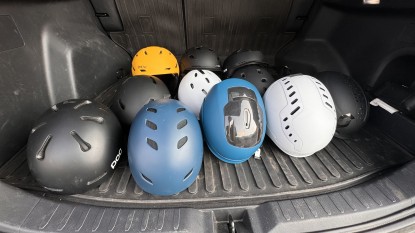Ski pants can be difficult to choose. While skiers often own many upper body layers and jackets, many only own one pair of ski pants. This need for versatility drives the design attributes of most ski pants on the market, though there are a few niche options designed for specific types of skiing. Our legs are less susceptible to cold than our upper bodies. We don't have as many blood vessels near our skin on our lower bodies, so they don't get the feeling of being cold as easily. This allows our ski pants to pack less insulation and focus on the more critical tasks, including durability and weather resistance.
Often, ski jackets are also used for other winter activities like shoveling and commuting, while conversely, ski pants are usually only used on the mountain. As a result, most people aren't willing to spend as much money on ski pants, which they won't wear as much as their ski jacket. Finally, we sit on cold and wet chairlifts, slash at our pants with ski edges, and hopefully spend a lot of time trenching through deep powder. Pants must be strong and weatherproof while allowing for a significant range of motion.
Related: 10 Best Ski Jackets of 2025
Types of Ski and Snowboard Pants
Ski pants are generally delineated by the type of shell fabric that they use, and the degree to which they are insulated. Three-layer hardshell pants provide great weather resistance but lack any warmth. Two-layer shells often deliver excellent weather resistance while also providing some warmth in the form of a hanging liner. Insulated pants pack synthetic insulation beneath the outer shell, and are the best choice for the coldest winter environments. Bibs are like overalls, providing the best weather resistance out of any design, but they sacrifice range of motion and can feel stuffy during aerobic skiing. And backcountry pants usually feature softshell fabric that is stretchy and breathable, but not resistant to precipitation.
We don't distinguish between ski and snowboard clothing, though we do include specific mentions of features and styles that are better suited for one activity over another. Both activities have very similar practical demands. The primary difference is in style and taste, and these lines and distinctions are becoming ever more blurry. We encourage you to choose products for their function and your style and preferences, whether you slide on one plank or two.
3-Layer Shell Pants
These are the simplest pants in our test and on the market. The pants are constructed of “fabric” that is a laminated sandwich of three different materials, all stuck together. The name refers to the number of sheets that are joined into one. The outer fabric is what the world sees and what first blocks abrasion and weather. Stuck to the inside of the face fabric is the waterproof/breathable membrane. This layer ultimately blocks liquid water, even when the outer fabric gets soaked.
Stuck to the inside of the membrane is a light fabric that serves to protect the membrane as well as make it at least slightly more comfortable against the skin. The end result appears as a single, burly layer of fabric. Pants constructed with a three-layer shell fabric are stiffer and more confining than the alternatives because the fabric itself is thick. They go on easy and vent well. They don't feel all that great against bare skin and therefore are more comfortable when worn with long underwear. For backcountry travel on stormy days, we prefer three-layer shell pants with a thin long underwear layer underneath.
2-Layer Shell Pants
In this category of pants, there are still at least three layers of material. The layer count refers to the number of sheets of textile that are laminated together. They include a beefy face fabric with the waterproof/breathable membrane laminated to the inside of it. In this case, however, a lining fabric hangs independently from the external components. The lining fabric is usually soft and comfortable, making these pants easier to wear against the skin. The space between the liner fabric and the shell fabric provides an additional air pocket that, once warmed by the body heat of the user, adds insulation.
Insulated Ski Pants
Just like it sounds, this category of pants has some sort of “puffy” insulation. For a given amount of warmth in the coldest of conditions, insulated pants will be more comfortable than the equivalent layering scheme. However, the insulation cannot be removed for warmer conditions, higher output, or warm-blooded skiers. If you know you run cold and ride exclusively in relatively cold conditions and climates, check out insulated pants.
Some will want insulated pants as a second pair in their quiver. For the coldest of days, this can be a good idea as significant layering underneath shell pants can get bulky. For users that get out often enough to justify owning multiple pants, an insulated pair to complement your daily driver is worth consideration.
Ski Bibs
Bibs are great for full-body weather protection. Under so many conditions, the gap between ski pants and ski jackets is the most vulnerable to weather penetration. Bibs bridge this gap. If the fit works for you, bibs can be far more comfortable than standard waist-height pants. Drawbacks include poorer venting and the extra layers on your upper body. Some users don't appreciate the extra warmth around their abdomen and chest. Additionally, bib-style pants are more limited in production and distribution. In the bib category, you have fewer options for fit, color, insulation, style, etc.
Backcountry Skiing Pants
Before we get into this style, we must note that many people use their regular resort pants in the backcountry. This works, but more and more pants are being designed specifically for backcountry use. The lighter and more tailored resort pants are also appropriate for backcountry skiing, most of the time. In fact, our lead test editor has long reached for the Arc'teryx Sabre AR when his ski guiding days look cold and snowy.
Backcountry ski pants are tailored to the needs of their expected environment. They are typically lighter weight, provide plenty of ventilation, and fit closer to the body than resort pants. Many consist of a softshell material for the outer fabric. Backcountry-specific models we have tested are noticeably less weather-resistant, largely due to the lack of thick, heavy fabrics found on many resort pants. The trade-off is greater breathability for skinning uphill, less weight, and a greater range of motion. Backcountry skiing pants also feature a dedicated pocket with an internal clip for an avalanche transceiver.
How to Select Your Next Pair
The first thing you should do to help narrow down the dizzying field is to choose which of the above styles works for you. If you ski in the coldest environments, or just run cold in general, opt for an insulated pant. Otherwise, a shell pant is the way to go. If you are experienced with layering want the most versatile option, choose a 3-layer shell. If you are newer to shell-only pants and want some additional warmth beyond what long underwear can provide, go for a 2-layer shell. If you ski deep snow in wet climates regularly, or want extreme weather protection, choose a pair of bibs. If you don't need the weather protection of an Alaskan fisherman, you'll do just fine without bibs. Then, continue to the options below.
Fit
Fitting traditional ski pants is pretty simple. You'll be hard-pressed to find a manufacturer that doesn't provide a size chart for any of their pant models. A few models may run shorter or longer, but we find most to be true to size within an acceptable margin in our experience. Consider a pair of pants with a Velcro adjustable waist to customize the fit. Most models also come with belt loops.
Bibs present a slightly trickier scenario. If you choose bib pants, be cautious of fit. In addition to waist and inseam, you must consider torso length and girth. The best way to get an excellent fit is with fully separate tops and bottoms. However, for many people of average girth, bibs work well.
Durability and Weather Protection
Next, consider the durability and protection you require. Will you ride 100+ days a year, charging hard and fast in all conditions? Or do you get out a few weekends a year and reign it in when the weather turns foul? In short, you get what you pay for. More expensive pants, basically across the board, will best serve the former. The latter group won't experience “overkill” with the better-designed options, but their dollars may be better spent elsewhere.
What About Style?
After sorting through which overall type you will select and determining the level of abuse- and weather-resistance you can afford, consider the fashion variations. In short, we know that appearance matters. We even offer further rationalization in the following maxim: If you look good, you feel good. If you feel good, you ski well. If you ski well, you ski safely. So, really, looking good equates to safety. In all seriousness, most will want to consider the cut of your pants and the color.
Current ski pant fashion is moving towards a neutral but not too baggy, not too tight. Still, there are options across the spectrum. Consider how loose you want to go. In terms of color, you have tons of options right now; it's a great thing. In our review of ski pants, almost every pair comes in a variety of both bright and muted colors. With bright colors, muted colors, and printed patterns available, you are free to make whatever statement you wish with your pants. However, our more fashion-conscious reviewers caution about getting too bold with your colors. Your pants will be asked to accompany a few different ski jackets. Make sure that all combinations are suitable.
Resort and Backcountry Use?
Before you finish your pant shopping, consider whether you will ever hike in your ski clothing. More and more, people are exploring the backcountry. Some make the occasional short hike ("booting" or on touring skis and climbing skins), while others spend as much time (or more) in the wilderness as they do riding lifts. Ski resort pants that work well for hiking fit a little closer than the average style, are readily worn without long underwear, and have large and effective vents.
Features
Finally, consider what other features you are seeking. Each skier has his own preferences on the pocket count and layout. You'll want at least two pockets, but 4-5 won't go unused. You want the pockets to sit, ideally, along the outside of your legs. Contents placed here will swing and chafe less than stuff stored immediately in front or behind the user's legs. Zippered pockets are much more trustworthy to hold small items than Velcro closures.
Some pants come equipped with RECCO brand avalanche safety “reflectors.” These devices are part of a commercially-made integrated avalanche rescue system. RECCO devises should never be considered as a replacement for an avalanche beacon, because they are not. Other features to consider include suspenders, integrated belts, and Velcro-adjustable waistlines. And when it comes to elastic inner cuffs, our testers prefer longer ones over shorter ones, as they are easier to pull down over ski boots.
Conclusion
While you might put more thought into your ski jacket, the right set of pants can have just as significant of an effect on your ability to feel good and have fun on any mountain. Keep our recommendations and considerations in mind while shopping to narrow down your options and lead you to the pair that suits you best. Buying right the first time saves you frustration on the ski hill and money in your wallet.

